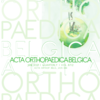Investigation of the relationship between trochlear morphology and medial patellar cartilage defect using magnetic resonance imaging
chondromalacia patella ; femoral trochlea ; morphology ; magnetic resonance imaging
Published online: Sep 14 2021
Abstract
The aim of this study was to evaluate trochlear morphology in patients with medial patellar cartilage defects via magnetic resonance imaging (MRI).
Three hundred patients who were diagnosed with grade 2, 3 and 4 medial patellar cartilage defect using MRI according to the International Cartilage Repair Society Classification System and 100 control subjects were evaluated. Trochlear morphology was evaluated based on lateral trochlear inclination (LTI), medial trochlear inclination (MTI), sulcus angle( SA), femoral lateral and medial condyle symmetry, trochlear facet asymmetry, and trochlear width on the axial MR images.
The mean SA was significantly higher in the medial patellar cartilage defect group compared to the control group (p<.05). The LTI and MTI of the cartilage defect group were significantly lower than those of the control group (p<.05). With the decreasing LTI and MTI, there was an increase in medial patellar cartilage loss. LTI (r=-0.46) and MTI (r=-0.53) were moderately correlated with SA. There was no significant differences in femoral lateral and medial condyle symmetry, trochlear facet asymmetry, and trochlear width between groups with and without medial patellar cartilge defect (p > .05).
A flattened medial trochlea is a risk factor for cartilage structural damage of the medial patellofemoral joint, and it plays a role in the development of a defect in the medial patellar cartilage. The medial patellar cartilage defect is associated with the flattened lateral trochlea.
